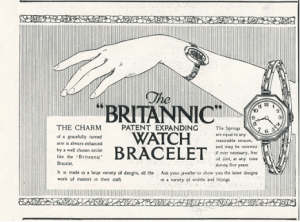2 Consumer Culture and the Environment
Megan Wallenius
“Climate Change is the symptom, Consumer Culture is the disease” (Atkin, 2019). Over the past century, consumer culture has had very destructive impacts on the environment. Consumer culture, which is the consumption of, buying or selling of goods driven by social norms, is responsible for 10% of greenhouse gas emissions in the world (Atkin, 2019). Sport is one place where we see consumer culture magnified, as the sports industry has begun to focus on consumption rather than the sports themselves. I have fallen victim to purchasing way more than I need, and in this chapter, I work to learn about the consequences. As we all know climate change has been an issue at the forefront of our society for many years, but we need to act now to avoid irreversible effects. In this chapter, I argue that consumer culture is detrimental to the environment, and that through sport we see this issue become further magnified.
What is Consumer Culture?

Consumer culture is the spending of customers’ money on material goods to attain a good lifestyle in a capitalist society. Consumer culture began in the 1920s with the introduction of the tabloid press, magazines, and radios (Featherstone, 1982). Since the 1920s there has been an exponential rise in the consumption of goods, as what used to be luxuries are now seen as necessities. The goal of the modern-day advertiser is to create value in the commodities by displaying them in a way where they make the consumer seem like a more desirable person (Firat et al., 2013). We live in a society where the message stands that you are what you own, and the more you own the happier you will be. Consumption in our society is a social process. Buying more means having a higher social status (Firat et al., 2013). The ideology behind this is to legitimize capitalism in our daily lives and motivate people to become these greater consumers. The more consumers there are, the more money these companies can make (Firat et al., 2013).
We are living in an era of mass production where there is an expectation that any item that we want is always going to be available to purchase. Since buying all these products is so simple, we take them for granted and do not recognize the consequences of all our purchases (Firat et al., 2013). I believe that we purchase way more than we need because we want to fit in. We strive to attain a high societal status and will do whatever it takes to achieve it.
Consumer Culture in Our Society.
Throw away culture is a term used to describe the overconsumption and excessive production of short-lived disposable items (Vince, 2012). The reason why this occurs is that when companies make products with a deliberately short life span consumers have to re-purchase more frequently. The theory behind this is called planned obsolescence, and it works to explain why products are manufactured not to last (The New Anticapitalist Film Gallery, 2017). One of the earliest examples of obsolescence is the lightbulb. Back in the 1920s, lightbulbs lasted nearly 2,500 hours, where today they only last 1,000 hours. The company who made lightbulbs made them purposely to have a shorter lifespan (Vince, 2012). Companies deliberately make products that don’t last so that they can make a higher profit. The issue behind this is the detrimental effects it has on the environment. There is a constant stream of toxic waste that is piling up on our planet with nowhere to go (The New Anticapitalist Film Gallery, 2017).

Another trend that we have seen in our society that causes excessive production is fast fashion. Fast fashion is a term used to describe a highly profitable business model where replications of the most recent fashion trends are mass-produced at a low cost (Duggan, 2018). Since 2000, clothing production has doubled as clothing companies have gone from releasing only two lines of clothing a year to now releasing an average of six. More of us tend to buy cheap clothes that are trendy during a particular time, but don’t last (Duggan, 2018). Fast fashion is the second-largest polluter in the world, just after the oil industry. The toxic water waste from textile factories is dumped directly into rivers causing adverse effects for the aquatic life, and the communities near that water source (Scientific American, 2011). This water eventually reaches the ocean, which will eventually spread it around the globe.
Consumer Culture in Sport
When looking at Consumer Culture in sport we see marketing and consumer goods continuously playing a larger role. The Olympics are an example of one of the most effective marketing platforms in the world (Smart, 2018). The increasing commercialism in the Olympics has led critics to say that they revolve less around sports and are more about reproducing wealth and consumption. The increase in marketing and global consumerism embedded in the Olympics only increases consumption, thus increasing the potential environmental risks. Over the years it has become apparent that the International Olympics Committee focuses more on the sponsors than on the athletes themselves (Smart, 2018).
Another example of consumer culture in the sporting world is how many times a professional sports team’s logo changes. As seen in the video linked, it shows the numerous times that the Toronto Maple Leaf’s logo has changed. Every time this is done, they produce all new jerseys for the team and the fans. This leads to more and more production of clothing. We are constantly buying and producing while not understanding the consequences that this may have on our environment. Just as seen with fast fashion, this type of production has detrimental effects on the water supply, and aquatic ecosystems.
For the All-star game in 2018, Adidas partnered with Parley for the Oceans to create environmentally conscious hockey jerseys (Palmeieri, 2019). I believe this is more of an opportunity for the NHL to profit off of their “environmental awareness” than a genuine concern for the climate crisis at hand. I am a victim of believing that just buying sustainable clothes makes us eco-friendly. But the real issue at hand is not always about how they are made but about the amount that is being produced. Just because it was made with fewer chemicals, does not mean that its production is good for the environment. I believe that the NHL should make one set of these jerseys and reuse these for the All-Star Games to come. There is no need for them to make a new set every year that is worn for one hour. By reusing the same ones they will be able to decrease their consumption.
How Does Consumer Culture Affect the Environment?
One of the main issues that we see present with consumer culture is its impact on the environment. William Rees of the University of British Columbia reports that we consume 30% more material than is sustainable from the world resources (Scientific American, 2011). While this has been an issue for a while, the consequences of our past are rapidly catching up to us.

Since the 1920s the amount of waste that humans produce has increased by nearly 10,000 percent (Atkin, 2019). This rise in waste is matching the exact timeline for when we saw the beginning of consumer culture.
There are many consequences of such statistics. If we continue on the current track, we will not be able to achieve the reductions needed for the world to stay below 1.5 degrees Celsius. Scientists say that this is a necessary temperature to keep a liveable planet (Atkin, 2019). This will require a change in our society, and this change needs to come very soon. If we want to do our part to decrease global warming, consumption-based emissions need to decrease by 50% by 2030 (Atkin, 2019). Social change is the only way that we will be able to reduce our consumption. It is through awareness and the willingness to make a change that this can occur.
Initiatives for change
With this growing issue, there are multiple initiatives for change. One example of this is in the UK where there is a movement occurring called the Right to Repair (Harrabin, 2020). This movement is trying to reduce the throw-away culture that is present. New regulations are being set in place that will ensure products are designed and manufactured to last, or repairable if they break, or are defective. This will include the regulation of everyday items such as phones, textiles, electronics, and batteries (Harrabin, 2020). This initiative is crucial, and one that needs to be implemented worldwide to decrease the obsolescence of products.
Another initiative seen is the increase in consumers participating in No Buy Day, which is held the Saturday after Black Friday every year(Macleod, 2019). The whole goal of this day is urging the world to change their purchasing habits, by consuming and producing less. Before writing this chapter, I had no idea about this initiative. There needs to be more media attention to raise more awareness and get more people involved in the initiatives taking place.
Conclusion

While writing this paper, I asked myself why I had never heard about this topic in the media. Our capitalist society thrives on consumer culture; the more you buy the more money corporations make. These companies don’t want you to buy fewer clothes or products, as they do not want to lose any profit. There needs to be a new consumer model that does not focus on how sustainable products are but on decreasing the number of things bought and produced. It needs to be understood that infinite growth is not compatible with a finite planet. We need a new focus and one that revolves around products lasting longer and being re-used as much as possible. By exploring this topic through sport and the overproduction of hockey jerseys we can see how consumer culture has infiltrated all parts of our society. This is a problem that needs to be taken seriously as climate change is only getting worse, and if we do not start to change our outlook on the way we live, then it is all downhill from here.
References
Atkin, E. (2019). Climate Change Is the Symptom. Consumer Culture Is the Disease. TNR. https://newrepublic.com/article/154147/climate-change-symptom-consumer-culture-disease
Duggan, G. (2018). Our fast fashion habit is killing the planet. CBC, 50.
Featherstone, M. (1982). The Body in Consumer Culture. Theory Culture … Society, 1(2), 18–33. https://doi.org/10.1177/026327648200100203
Firat, A., Kutucuoglu, K. Y., Arikan Saltkin, I., & Tuncel, O. (2013). Consumption, Consumer Culture and Consumer Society. Journal of Community Positive Practices, 13(1), 182–203.
Harrabin, R. (2020). Climate change: New rules could spell end of “throwaway culture.” BBC, 2020. https://www.bbc.co.uk/news/science-environment-51825089
Macleod, M. (2019). Made-in-Canada Buy Nothing Day takes aim at Black Friday consumer excess. CTV News.
Palmeieri, J. (2019). NHL and Adidas to create sustainable jerseys for All-Star Game. Los Angeles Times.
Scientific American. (2011). Shop Till We Drop : Does Consumption Culture Contribute to Environmental Degradation ? Scientific American.
Smart, B. (2018). Consuming Olympism: Consumer culture, sport star sponsorship and the commercialisation of the Olympics. Journal of Consumer Culture.
The New Anticapitalist Film Gallery. (2017). The Lightbulb Conspiracy : Planned Obsolescence. YouTube. https://www.youtube.com/watch?v=dLr3IaTdZbQ
Vince, G. (2012). The High Cost of our Throw Away Culture. BBC Future, 2012. http://www.bbc.com/future/story/20121129-the-cost-of-our-throwaway-culture

